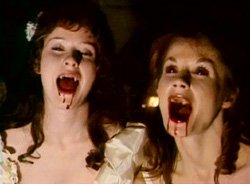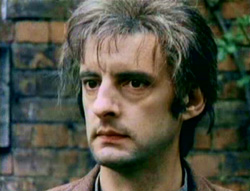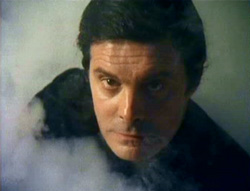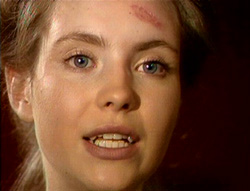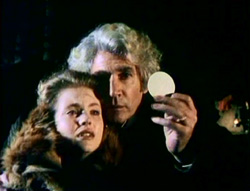|
BBC, 1977 |

Easily the best version of Dracula filmed to date, this BBC television production was originally presented as a three-part miniseries. This version hews fairly close to the original novel, including a fairly extended version of Harker's adventures at Dracula's castle, Lucy's sleepwalking in the cliffside graveyard at Whitby (apparently shot on location, with the famous long stone staircase of Whitby memorably showcased), and a final chase across the "Transylvanian" countryside.
Louis Jordan (of "Gigi" fame) seems an odd choice to play the Count, but proves to be surprisingly effective. Beneath his courtly Continental manners, he manages to imply a will of steel and an otherworldly coldness. Frank Finlay is also memorable as the comically eccentric Professor Van Helsing, whose habitual lightness of manner makes his occasional serious moments more impressive by contrast. (The BBC lost a great opportunity by never casting Finlay as Dr. Who.) The comely Susan Penhaligon vamps her way outrageously through her role as the flirtatious Lucy, and her interludes with the Count are some of the more torridly suggestive that have been filmed in a serious movie. When her vampire tendencies start to surface, once can sense a current of barely concealed mirth in Penhaligon's performance. The other performers are more perfectly in character, with Mark Burns showing a tortured gravity as Lucy's hopeless admirer Doctor Seward; Richard Barnes as Quincy has the comical Wild West accent ascribed to the character in the novel. The improbably named Bosco Hogan makes Jonathan Harker's vulnerability and desperation very real. Jack Shepherd is a memorably intense Renfield, a grotesque but surrealistically poetic and finally tragic figure. Finally, Judy Bowker as Mina Westenra/Harker overshadows the male leads, as she must, with her nobility in the face of her own creeping transformation.
The special effects in general are primitive by today's standards, but always interesting and atmospheric. The storm scene with a model ship bobbing about on slowly undulating black sheets seems to show great inventiveness in the face of a limited budget. Other psychedelic visual elements enhance the otherworldly character of the story. The treatment of the story as a metaphor for Victorian sexual repression is typical of more recent productions and may have served to influence the campy Bram Stoker's Dracula and Dracula: Pages from a Virgin's Diary. However, the usual modern device of tying Dracula to his historical namesake, is only briefly hinted at here by woodcuts of the Impaler's work in the opening credits.

